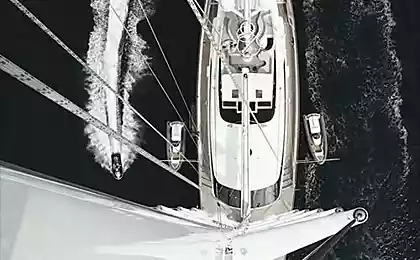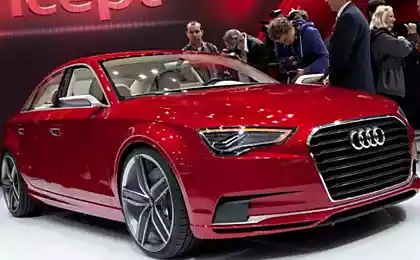936
Japan allowed the vehicles without rear-view mirrors
Setting display enhances safety and improves the aerodynamics and the unmanned vehicle mirror does not nuzhno
concept of unmanned car Mercedes Benz F 015 with no windows and mirrors
In all accustomed to the fact that the rear-view mirrors are compulsory elements of the car for many years. On modern machines, usually installed three mirrors, one in the passenger compartment above the windscreen and two outside front doors
. Exterior mirrors remained practically unchanged since 1911, when this innovative element is installed on the racing car Marmon Model 32 Wasp on the wheel pilot. American riders Ray Cyrus Hatchke Harrun and realized that using the gadget convenient to observe the traffic behind the car. And it has paid off - an extraordinary reception helped them win the race Indianapolis 500.
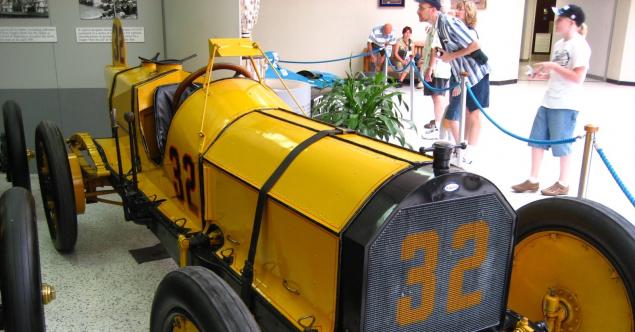
Marmon Model 32 Wasp - the first in the history of the car from the rear view mirror
Soon, the mirror has become a necessity not only in the race but also during normal driving on city streets. In countries with large traffic flow for cars then added one rear-view mirror on the left of the driver, and then - and the right, for a better view. Later mirrors become compulsory equipment of civilian cars. Now, due to their lack of a fine is imposed.
In developing the new car designers and engineers are finding different ways to get rid of sticking out "ears" on each side of the streamlined futuristic concept car. In some "ears" models fold via electric motors, pressing them to the car body. This design is implemented, even in a few production models.
A more advanced replacement just three mirrors - this is a big screen in the lounge, which displays a picture with a camera mounted on the perimeter of the vehicle. Concepts display instead of rear-view mirrors are very popular among designers. In the auto shows are often exposed to similar exhibits. Unfortunately, these concepts are only in the fantasies of designers, because of technical regulation standards in most countries prohibit the admission to operation of the vehicle.
When Google has begun testing a prototype of an unmanned vehicle of its own production, then she was forced to equip cars with mirrors, pedals and other vestiges of old cars that are adapted to the human body. Ideally, in the car of the future should be no unnecessary elements that complicate the design - no steering, no pedals or steering wheel, the button only "Let's go."

the Google unmanned vehicle on the street in Mountain View, equipped in accordance with the requirements of the National traffic safety on US transport 2015
Even the driver's seat in the future can be replaced on the bed, and put a convenient screen for showing films instead of the windshield. If necessary, the display on the perimeter of the cabin in place of automobile glasses are switched to "transparency regime" that is beginning to show a picture of a camera on the outside.

concept of unmanned car Mercedes Benz F 015 with no windows and mirrors
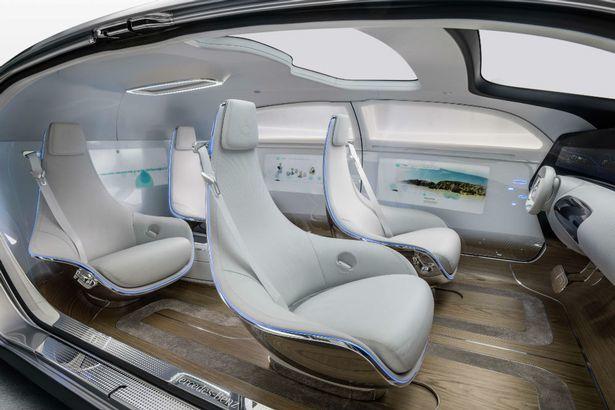
concept of unmanned car Mercedes Benz F 015 at CES 2015
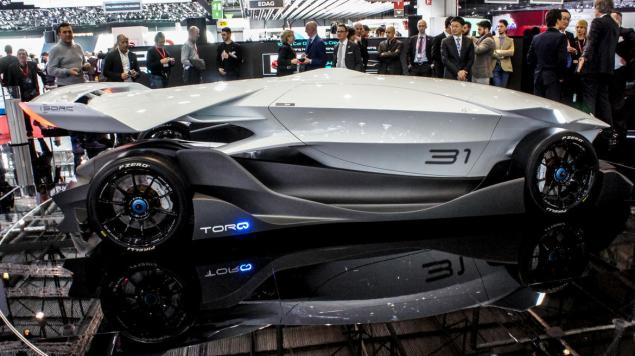
unmanned electric vehicle concept at the Geneva Motor Show Torq 2015
Unmanned vehicles without windows and mirrors - matter of the distant future, but to replace the usual mirror on the electronic display can now. The easiest way to do this is by placing the display on the spot rear-view mirror as it offers make Nissan.
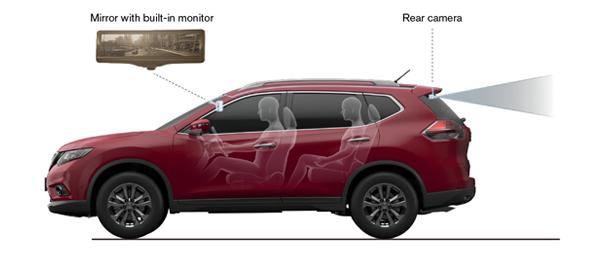
Nissan Smart Rearview
This is preferable from a security point of view, because the display with wide-angle camera provides better visibility than conventional mirrors. Cameras cover the "blind spots", which are located behind and to the side of the car and can not be seen in mirrors.
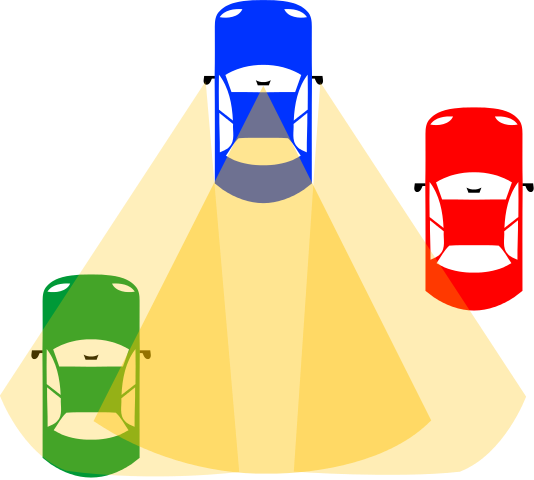
blue car driver sees in the rearview mirror green car, but did not see the red
In addition to displaying blind spots, video display can improve visibility in other ways. For example, display additional contextual information and improve the image in conditions of poor visibility in rainy weather or in the dark. For example, the cameras at night in the infrared show the video, as night vision devices.

In rainy weather, to "smart mirror" image remains clear and uncluttered

computer video processing system suppresses flare from the sun or the fog lights behind the vehicle in
Ideas automotive designers are getting closer to reality. In May 2016, Japan became one of the first countries in the world that allowed the operation of civilian cars on the roads of general use with video cameras and displays instead of mirrors. The new rules entered into force on 17 June 2016.
Representative Office of road transport of Japan explained that the visibility standards for automotive mirrors mounted UN. So far, computer monitors and video cameras do not have sufficient performance to meet these standards, but in recent years has improved the image quality on the screen. Technological advances now have every reason to replace traditional mirrors on LCD monitors.
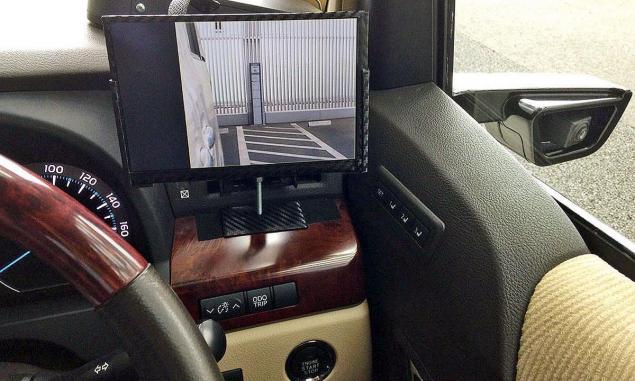
display in the cabin shows a picture from a rear view camera
Among Japan car exporters first decided to take this step, which gives certain competitive advantage to domestic producers. Apparently, that Japan release the world's first production cars without rear-view mirrors. Initiative regulators strongly supported the manufacturers of automotive parts and accessories, including Japan's Ichikoh Industries and the German Robert Bosch.
"Our job is to improve the overview of the road with the help of lights and mirrors, and now also with the help of video cameras," - says Ali Ordoobadi (Ali Ordoobadi), CEO of Ichikoh Industries, which manufactures car accessories. For him, it is an opportunity to expand the range of products and increase sales, "This technology change, something like a fracture. The all-new segment with the more expensive equipment, which means that you can increase profits. This is a new trend, and we intend here to get ahead of the rest. " June 28, 2016 Ichikoh Industries has released the first screen for the passenger compartment from the rear view display, model Smart Rear View Monitor. The company says that first of all the OEM-manufacturer in the world has released such a display. Soon it will be followed by one more example of the Japanese company Murakami Corp.
In addition to security enhancements, the rejection of rear-view mirror on the side doors improves the aerodynamics, which means a slight decrease in fuel consumption. Anyway, the machine without "ears," looks more attractive from an aesthetic point of view.
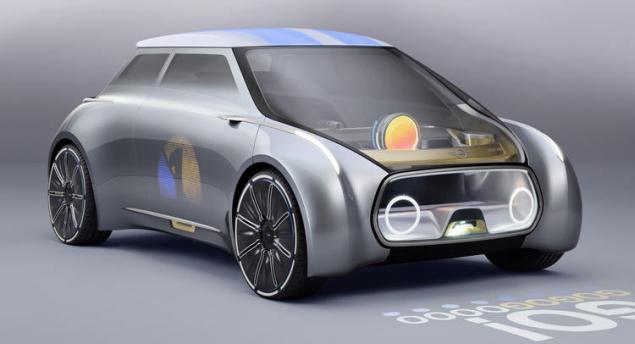
Concept MINI Vision Next 100
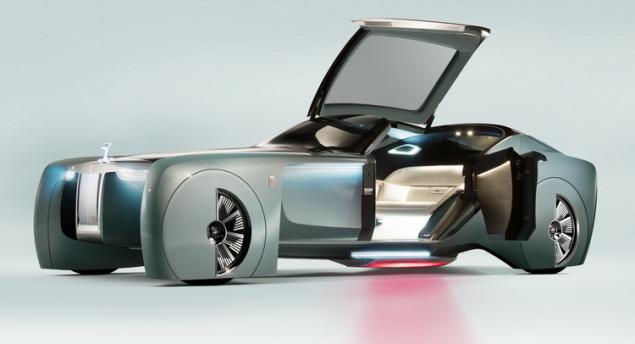
Concept Rolls Royce 103EX
Experts expect that after Japan in the near future a requirement for the installation of rear-view mirrors and the European Union will cancel. In the US, new legislation, expected to come into force in 2018. In the coming years the example of these countries must follow and China.
According to the forecast Ichikoh Industries, by 2023 approximately 29% of new cars in Japan will be sold with a computer monitor in the rear-view cabin.
The introduction of new technology will not go too fast, because the drivers with the experience for many years accustomed to the mirror and it will be difficult to give up their habits.
Source: geektimes.ru/post/278164/

concept of unmanned car Mercedes Benz F 015 with no windows and mirrors
In all accustomed to the fact that the rear-view mirrors are compulsory elements of the car for many years. On modern machines, usually installed three mirrors, one in the passenger compartment above the windscreen and two outside front doors
. Exterior mirrors remained practically unchanged since 1911, when this innovative element is installed on the racing car Marmon Model 32 Wasp on the wheel pilot. American riders Ray Cyrus Hatchke Harrun and realized that using the gadget convenient to observe the traffic behind the car. And it has paid off - an extraordinary reception helped them win the race Indianapolis 500.

Marmon Model 32 Wasp - the first in the history of the car from the rear view mirror
Soon, the mirror has become a necessity not only in the race but also during normal driving on city streets. In countries with large traffic flow for cars then added one rear-view mirror on the left of the driver, and then - and the right, for a better view. Later mirrors become compulsory equipment of civilian cars. Now, due to their lack of a fine is imposed.
In developing the new car designers and engineers are finding different ways to get rid of sticking out "ears" on each side of the streamlined futuristic concept car. In some "ears" models fold via electric motors, pressing them to the car body. This design is implemented, even in a few production models.
A more advanced replacement just three mirrors - this is a big screen in the lounge, which displays a picture with a camera mounted on the perimeter of the vehicle. Concepts display instead of rear-view mirrors are very popular among designers. In the auto shows are often exposed to similar exhibits. Unfortunately, these concepts are only in the fantasies of designers, because of technical regulation standards in most countries prohibit the admission to operation of the vehicle.
When Google has begun testing a prototype of an unmanned vehicle of its own production, then she was forced to equip cars with mirrors, pedals and other vestiges of old cars that are adapted to the human body. Ideally, in the car of the future should be no unnecessary elements that complicate the design - no steering, no pedals or steering wheel, the button only "Let's go."

the Google unmanned vehicle on the street in Mountain View, equipped in accordance with the requirements of the National traffic safety on US transport 2015
Even the driver's seat in the future can be replaced on the bed, and put a convenient screen for showing films instead of the windshield. If necessary, the display on the perimeter of the cabin in place of automobile glasses are switched to "transparency regime" that is beginning to show a picture of a camera on the outside.

concept of unmanned car Mercedes Benz F 015 with no windows and mirrors

concept of unmanned car Mercedes Benz F 015 at CES 2015

unmanned electric vehicle concept at the Geneva Motor Show Torq 2015
Unmanned vehicles without windows and mirrors - matter of the distant future, but to replace the usual mirror on the electronic display can now. The easiest way to do this is by placing the display on the spot rear-view mirror as it offers make Nissan.

Nissan Smart Rearview
This is preferable from a security point of view, because the display with wide-angle camera provides better visibility than conventional mirrors. Cameras cover the "blind spots", which are located behind and to the side of the car and can not be seen in mirrors.

blue car driver sees in the rearview mirror green car, but did not see the red
In addition to displaying blind spots, video display can improve visibility in other ways. For example, display additional contextual information and improve the image in conditions of poor visibility in rainy weather or in the dark. For example, the cameras at night in the infrared show the video, as night vision devices.

In rainy weather, to "smart mirror" image remains clear and uncluttered

computer video processing system suppresses flare from the sun or the fog lights behind the vehicle in
Ideas automotive designers are getting closer to reality. In May 2016, Japan became one of the first countries in the world that allowed the operation of civilian cars on the roads of general use with video cameras and displays instead of mirrors. The new rules entered into force on 17 June 2016.
Representative Office of road transport of Japan explained that the visibility standards for automotive mirrors mounted UN. So far, computer monitors and video cameras do not have sufficient performance to meet these standards, but in recent years has improved the image quality on the screen. Technological advances now have every reason to replace traditional mirrors on LCD monitors.

display in the cabin shows a picture from a rear view camera
Among Japan car exporters first decided to take this step, which gives certain competitive advantage to domestic producers. Apparently, that Japan release the world's first production cars without rear-view mirrors. Initiative regulators strongly supported the manufacturers of automotive parts and accessories, including Japan's Ichikoh Industries and the German Robert Bosch.
"Our job is to improve the overview of the road with the help of lights and mirrors, and now also with the help of video cameras," - says Ali Ordoobadi (Ali Ordoobadi), CEO of Ichikoh Industries, which manufactures car accessories. For him, it is an opportunity to expand the range of products and increase sales, "This technology change, something like a fracture. The all-new segment with the more expensive equipment, which means that you can increase profits. This is a new trend, and we intend here to get ahead of the rest. " June 28, 2016 Ichikoh Industries has released the first screen for the passenger compartment from the rear view display, model Smart Rear View Monitor. The company says that first of all the OEM-manufacturer in the world has released such a display. Soon it will be followed by one more example of the Japanese company Murakami Corp.
In addition to security enhancements, the rejection of rear-view mirror on the side doors improves the aerodynamics, which means a slight decrease in fuel consumption. Anyway, the machine without "ears," looks more attractive from an aesthetic point of view.

Concept MINI Vision Next 100

Concept Rolls Royce 103EX
Experts expect that after Japan in the near future a requirement for the installation of rear-view mirrors and the European Union will cancel. In the US, new legislation, expected to come into force in 2018. In the coming years the example of these countries must follow and China.
According to the forecast Ichikoh Industries, by 2023 approximately 29% of new cars in Japan will be sold with a computer monitor in the rear-view cabin.
The introduction of new technology will not go too fast, because the drivers with the experience for many years accustomed to the mirror and it will be difficult to give up their habits.
Source: geektimes.ru/post/278164/
